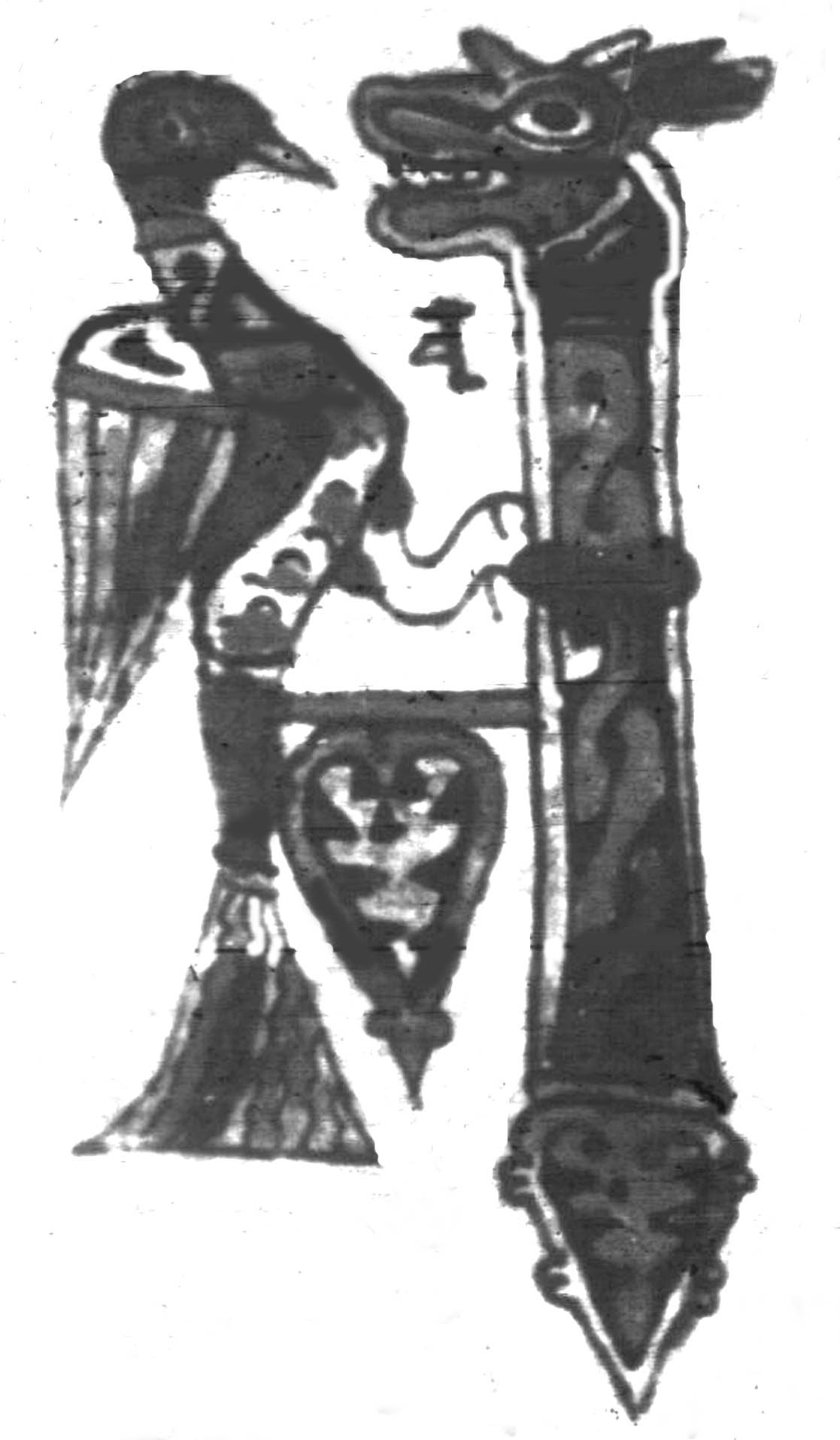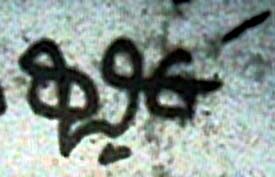|
About
15 years ago, when I first saw a facsimile of MS 124 (one of the famous
family 13 MSS) I realized that I had in my possession copies of manuscripts
written by the same scribe. On this website I have the opportunity to
present these findings. To reproduce these facts please give Mr. Gary
S. Dykes credit. This page is copyrighted © 2006 by Mr. Gary S.
Dykes
Various
introductory texts to the study of the Greek NT manuscripts date our
three manuscripts over a broad range- from 10th to the 12th centuries.
Thus this new information, presented here can remove the 3 century spread
in dating any or all of these manuscripts. I would date the three (124,
326 and 1837) as circa A.D. 950- 1000. The earliest of the three seems
to be 1837.
As
is well known MS 124 is a gospel manuscript. It was written in Calabria
(Metzger, Hatch, Ferrar). It is part of a well known family. Minuscules
326 and 1837 are praxapostolos manuscripts, also written by the very
same unknown scribe. No colophons were observed in these two MSS (326
and 1837). MS 326 is presently in the Bodleian Library as Lincoln College-
Gr. 82. MS 1837 currently lies in Grottaferrata as Bibl. della Badia,
A. b. 3..
MS 124 is in the Vienna National Library as Gr. 188.
Some
years ago, Bover, in his edition of the Greek New Testament mentioned
that there seemed to him to be a group of manuscripts of the Pauline
corpus which could be equivalent to the Gospel family 13 group. He preferred
the designation of "Caesarean" for this group of Pauline/praxapostolos
MSS. He mentioned 1837 as well as MSS., £,
1739 and Von Soden's
group Ia3. Bover offered no supporting evidence, just this suggestion.
His
(Bover's) suggestion has not received much attention. But, independently,
about 10 years ago, I too perceived a group of praxapostolos MSS which
would parallel the Ferrar group of the Gospels. However, I would not
identify it with Caesarea, nor would £,
or 1739 be strong
members. Some of Von Soden's Ia3 group are in my group.
But
also of interest as concerns our 3 MSS (124, 326, 1837) is that they
are by the same scribe, decorated by the same person (which may be the
scribe), and each represents a Calabrian text. MS 124 is definitely
a part of family 13, I would designate the 326 and 1837 MSS as "Calabrian",
a group, not a text-type.
326
is heavily protected by the Library holding it (as concerns copyright)
so I can only give a few small sample images from a film I purchased.
The MS is in TWO columns (as are all three MSS). Here is a portion of
one column:
 MS 326 sample MS 326 sample
Here
is a sample of MS 1837:
 MS 1837 MS 1837
And
finally a sample of MS 124:
 MS 124 MS 124
Not
much detailed analyses is required to validate the fact that all three
are written by the same scribe: but here is some basic data.
FIRST,
MS 124:
MS
124
- 2 columns, on parchment. Ornamented headpieces, ornamented initial
letters. 25 to 28 lines per page. Equipped with basic liturgical apparatuses.
Arche/telos in text. Uses a goodly number of uncial letters, uses a
goodly number (but not excessive) of ligatures. All breathings are square.
Occasional diareses. Occasional double accent over de.
Letters are written
pendant. Uses a type of punctuation which uses 1, 2, 3, or 4 dots and
the interrogation mark is 3 dots with a comma tail. Like 326 and 1837
has similar zoomorphic ornaments. Makes effective use of color. Occasional
iota adscript. Letters beginning the first lines of a book are usually
color decorated uncials , in the Western/Latin style.

The
above image (enlarged) is from folio 54 (per the numbers written at
the upper right corners
of the MS) of MS 124, Mark chapter one. An enlarged zoomorphic initial.
The similarity with the
zoomorphic
ornaments is MSS 326 and 1837 is obvious.
Minuscule
124 is available for viewing at the website --
http://intf.uni-munster.de/vmr/NTVMR/viewer/viewerWolkenkratzer01.php
(one
must first register to view the manuscripts)
MS
326 - 2 columns, on parchment. Ornamented headpieces,
ornamented initial letters - sample:

As
you can see, besides the enlarged formal decorated initials, this scribe
in all 3 MSS will add some color to the initial letter for various purposes.
After a arche/telos reading, after quotes, or beginning of new sections/paragraphs.
MS 326 has 27 lines per page. Uses the same uncials as 124, as well
as the same ligatures. Here is a nice sample ligature:

All
three MSS display this ligature. A combination of
.F
Q e. One interesting
feature which 326 shares with 1837 is the position of Jude (which Swanson
somehow omits!). Quotes are marked in MS 326. Letters are pendant from
the line. Diareses are used, occasional double accent seen over de.
Manuscript has corrections
noted by another reader/viewer, indicated by a series of marks over
the position (dots, and or a wavy line, or a combination of dots and
a wavy band). Same type of abbreviations as used in 124 and 1837. Same
type of punctuation used. See above images for a few samples. Iota adscript
is seen in all three MSS, but the usage is not regular.
MS
1837 - Written probably a decade or so earlier
than MS 124 and 326. The hand is not quite so neat. It too contains
liturgical data (arche/telos) Sabbath readings (as do the other two
MSS 124, 326), but unlike 326, 1837 has not a synaxarion , or it is
missing. 124, 326 and 1837 have zoomorphic images. Below is a sample
from 1837:
 MS 1837 MS 1837
Note
too, the medallion type of image of the Apostle John. This style of
art is identical to MS 326. Note similar creatures seen in the sample
from 326 below: (enlarged).

The
scribe of all three manuscripts exercises some flexibility and freedom.
He has quite a variety of decorated initial letters, such as for the
letter Pi, and he uses a large variety. MS 1837 has 30 lines per page
(29 in Acts). As with 326 the gatherings are indicated by the original
scribe. Quotes are not marked in MS 1837. Both MSS 326 and 1837 share
numerous unique readings seen (as yet) in no other MSS. My research
is ongoing as concerns these manuscripts.
Both
326 and 1837 have, following Hebrews, the "Travels of Paul"
[Apodhmia
tou Agiou Apostolou Paulou].
As mentioned above, 326 also has a complete synaxarion and menologion.
The menologian should be studied for further hints as to its (or its
exemplar's) provincial character. Interesting is the order of the books
in BOTH 326 and 1837, an order I have not yet seen elsewhere!
ACTS
JAMES
JUDE
I
PETER
II
PETER
I
JOHN
II
JOHN
III
JOHN
ROMANS
- 326 has Hypotheses for each epistle, however 1837 has not one for
Romans!
I
CORINTHIANS
II
CORINTHIANS
GALATIANS
EPHESIANS
PHILIPPIANS
COLOSSIANS
I
THESSALONIANS
II
THESSALONIANS
I
TIMOTHY
II
TIMOTHY
TITUS
PHILEMON
HEBREWS
The
position of Jude is notable. Hebrews is placed last. Neither MS had
Revelation. Each MS had identical stichoi readings.
The
position of Jude may be an important factor for identifying other MSS
of the Praxapostolos from Calabria, or other MSS allied with this SUB-GROUPof
326 and 1837. Both 326 and 1837 have very very similar texts. They are
not identical, but from the same, or sister exemplars. I would suggest
that both were made in a scriptorium, copied as a lector read, as each
exhibits a number of varying aural/phonetic errors. One of these may
actually be the companion volume for MS 124 of the Gospels.
Many
of the readings of 326 and 1837 suggest that they are part of a group
of Calabrian MSS which are not pigeonholed into the usual 3 recension
typology. They differ, but should not be labeled Caesarean, perhaps
Calabrian. They also differ somewhat from the usual Ia3 MSS of Von Soden's
nomenclature, hence 326 and 1837 form a small sub-group of these Calabrian
witnesses. Their exemplar probably came up from Sicily. Immigrants
to Sicily brought the exemplar from a Greek region - perhaps Northern
Africa, Palestine, Syria, or as some have suggested also from the Balkans.
These immigrations occurred largely during the Arab and Saracen conquests.
Some monks probably immigrated to Sicily during the iconoclastic upheaval
as well, These would be iconophiles, and hence no problem with icons
in the resulting manuscripts. In fact MS 326 has a very nice 1/2 page
painting of one of the apostles.
All
images of MS 326 are used via the fair use clause in the copyright law.
They are extracted from a film bought from:
Bodleian
Library
Oxford
University
Lincoln
College, Gr. 82
this
article copyrighted © 2006, by Mr. Gary S. Dykes.
 ....
click
to return to the NEW DISCOVERIES page ....
click
to return to the NEW DISCOVERIES page
|